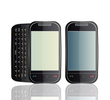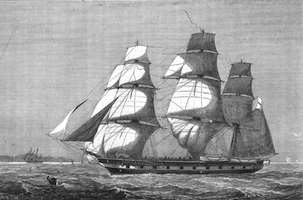In my Grade 3/4 music class the other day, we were working on layering rhythms. One person would start by suggesting with a simple 4-beat rhythm pattern, which we all copied. We gradually added in other rhythms, until we had a pretty complex pattern going on, with 4 different rhythms flowing, and no one with the same rhythm as his or her neighbor.
 My students are always amazed at how we can deepen the texture of the music we’re making by adding layers. It made me think of the way the technology available in our students’ pockets allows us, and them, to add layers to their learning, in ways we’ve never been able to do before.
My students are always amazed at how we can deepen the texture of the music we’re making by adding layers. It made me think of the way the technology available in our students’ pockets allows us, and them, to add layers to their learning, in ways we’ve never been able to do before.
We got a terrific example of this at our church’s annual Ash Wednesday day camp a few weeks ago. One of the activities we had dreamed up was a scavenger hunt in our worship space. My husband, who is one of the priests in the parish, naturally spends a lot of time in the sanctuary, so he created some challenging questions for the kids about the windows and memorial plaques and other details. Off they went, enjoying the chance to roam free in a space usually requiring their most silent and “restful” behavior.
New layers of just-in-time learning
One window in our church is a memorial to the son of a prominent family who died when his ship went down in 1880. The kids’ challenge was to find the name of the ship in the stained glass.
It took them awhile. The plaque and window are prominent, but they are at the rear of the church, and up high. There were many “a-has” when they finally discovered the window, and then they had to work to decipher the archaic font, but eventually they determined that the name of the ship was the Atalanta.
Ten years ago, despite their curiosity about the image, that would have been the (somewhat dry and dusty) end of the story. Now, a smartphone let us keep adding layers, and we began to unravel a fascinating mystery. I turned to one of the teens and said, “why don’t you Google it?”, and we were off.
First, there was the amazement at how many ships bore the name Atalanta (a huntress in Greek mythology) — and then the narrowing down of the right one, by date. Turns out, our 19th century parishioner set out on a training ship full of cadets, headed from Bermuda to Portsmouth, England, with a convoy of other ships. All but 2 ships made it. Wreckage from a transport ship accompanying the Atalanta was found, but of the Atalanta, and her 180 crew members, there was no sign.
Did you catch where they were sailing from? Cue the Twilight Zone theme. The Atalanta disappeared for no obvious reason, with no sign of wreckage…..in the Bermuda Triangle!
One layer leads to another
As you might imagine, we were totally jazzed, and started throwing theories around. Someone realized that one of our day camp volunteers writes a column for our local paper, and so they dragged her away to show her the plaque, and tell her the story, in hopes she might write a piece about it. My husband, who had done his own reading about the wreck, chimed in with news that there is a chapel in Portsmouth dedicated to the Atalanta’s dead.
Our family’s travel plans this summer include a stop to see relatives in Portsmouth, and my own two boys are excited about sharing our church’s connection with people they meet there.
Layers upon layers of connections, and a learning experience about their church that our parish kids won’t soon forget. All thanks to a pocket phone and a teachable moment. I love how effortless this has become, with the help of now everyday technology.
What layers is technology helping you add to your students’ learning?
Lisa Noble
Latest posts by Lisa Noble (see all)
- A Real Lesson in Digital Citizenship - April 30, 2019
- Pocket Tech: Adding Layers to Learning - March 5, 2013
- How Twitter Made a Bad Week Better - January 29, 2013


